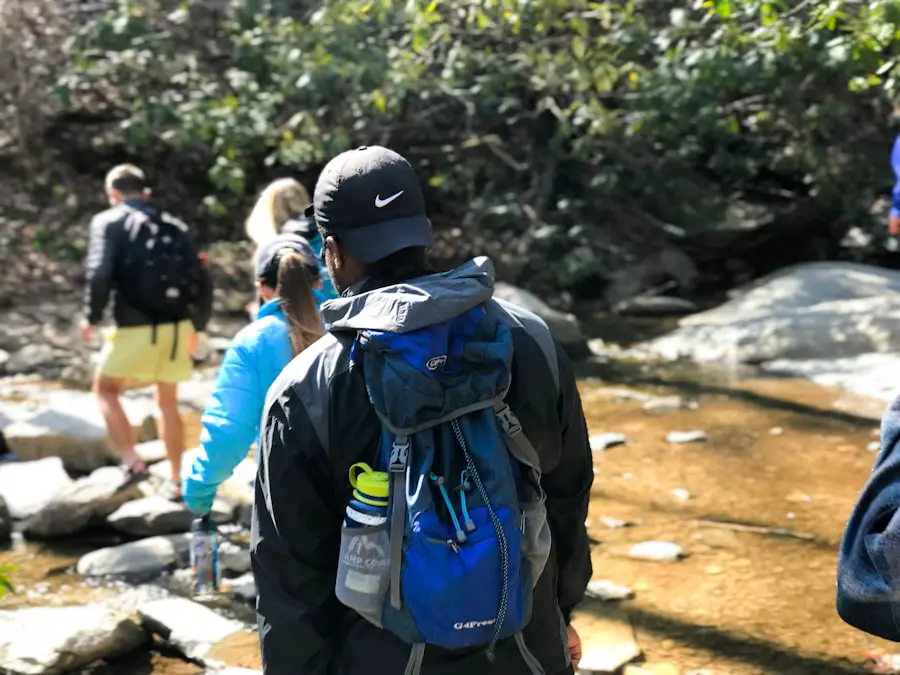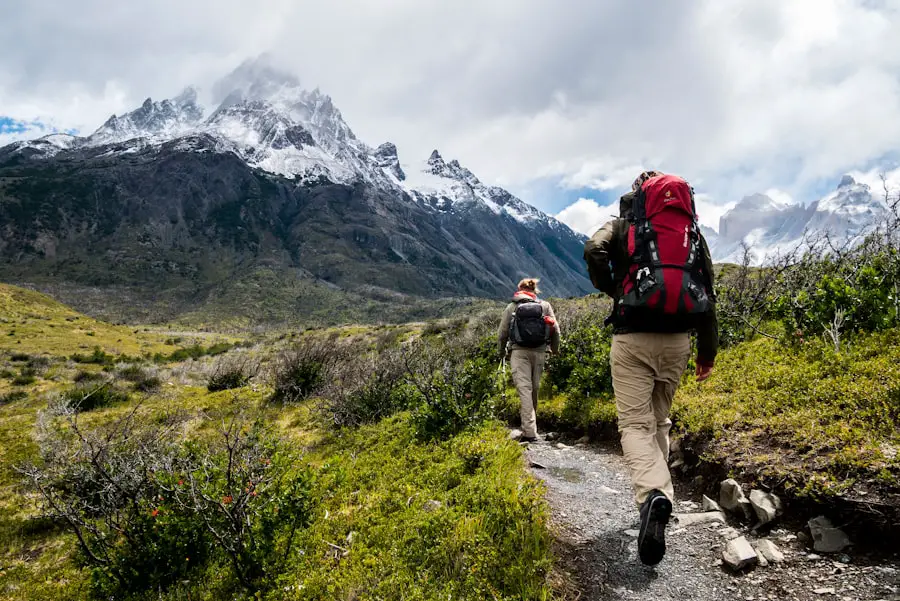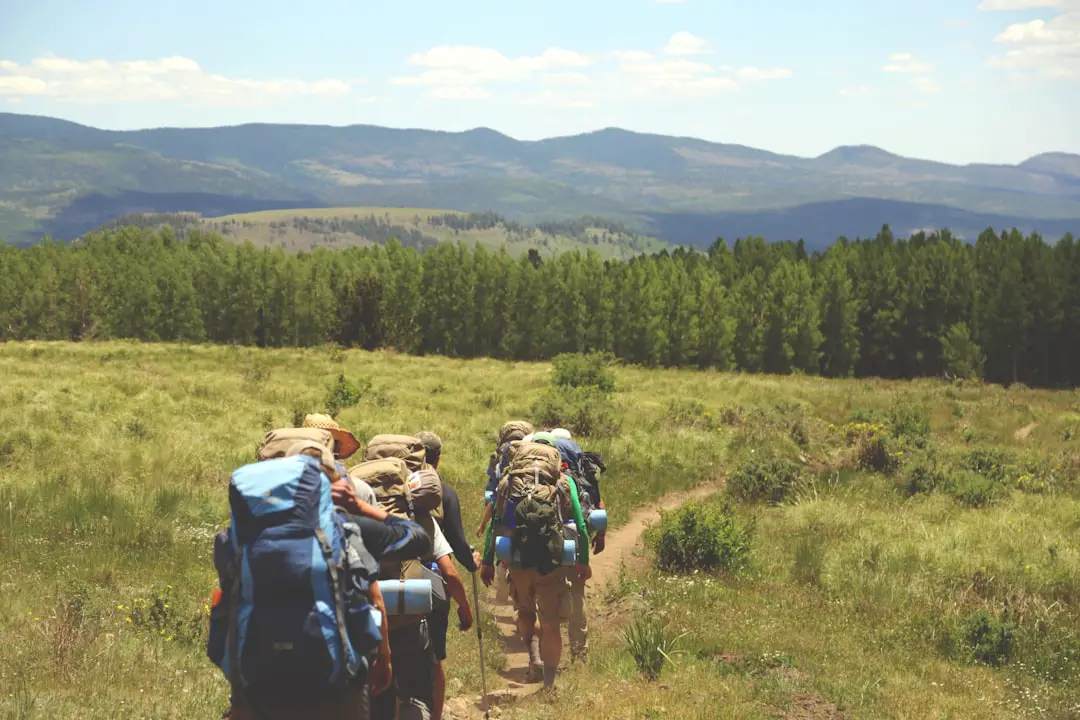Footwear is one of the most critical components of any outdoor adventure, whether it be hiking, trekking, or simply exploring nature. The right pair of shoes can make the difference between a comfortable journey and a painful ordeal. When selecting footwear, it is essential to consider the terrain you will be traversing.
For rocky trails, a sturdy pair of hiking boots with good ankle support and a rugged sole is advisable. These boots are designed to provide stability and protect your feet from sharp rocks and uneven surfaces. Brands like Merrell and Salomon offer a range of options that cater to various foot shapes and sizes, ensuring that you can find a fit that works for you.
In contrast, if your adventure involves lighter trails or urban exploration, trail runners or lightweight hiking shoes may be more appropriate. These shoes are designed for speed and agility, often featuring breathable materials that keep your feet cool during warmer months. However, it is crucial to ensure that they still provide adequate grip and support.
A good example is the Altra Lone Peak series, which combines a wide toe box with a cushioned sole, allowing for natural foot movement while maintaining comfort over long distances. Regardless of the type of footwear chosen, breaking them in before embarking on a long journey is vital to prevent blisters and discomfort.
Key Takeaways
- Choose footwear that is comfortable, durable, and appropriate for the terrain you will be hiking in.
- Dress in layers when hiking, and choose moisture-wicking clothing to stay dry and comfortable.
- Carry navigation tools such as a map, compass, or GPS device to help you stay on track during your hike.
- Select a backpack that is the right size for your needs, and pack it with essential items such as a first aid kit, extra clothing, and food.
- Stay hydrated by carrying enough water for your hike, and consider bringing a water filtration system for longer trips.
Clothing
Base Layer: Moisture-Wicking Fabrics
The base layer should be moisture-wicking to keep sweat away from your skin, which helps regulate body temperature. Fabrics like merino wool or synthetic blends are excellent choices for this layer, as they provide warmth without adding bulk. For instance, brands like Icebreaker offer merino wool base layers that are not only effective but also comfortable against the skin.
Fleece jackets or down vests are popular options for this layer, providing warmth without excessive weight.
Outer Layer: Protection from the Elements
The outer layer is your shield against the elements, such as wind and rain. Waterproof and breathable jackets made from materials like Gore-Tex are ideal for unpredictable weather conditions. The combination of these layers allows for flexibility; you can add or remove layers as needed to maintain comfort throughout your adventure.
Navigation tools

In the wilderness, having reliable navigation tools is essential for ensuring safety and preventing disorientation. Traditional maps and compasses remain invaluable resources, especially in areas where GPS signals may be weak or nonexistent. A topographic map provides detailed information about the terrain, including elevation changes, water sources, and trails. Learning how to read these maps effectively can enhance your outdoor experience significantly. For example, understanding contour lines can help you anticipate steep climbs or descents, allowing you to plan your route more effectively.
In addition to maps and compasses, modern technology has introduced various GPS devices and smartphone applications that can aid in navigation. Devices like the Garmin GPSMAP series offer features such as preloaded topographic maps and waypoint marking, which can be incredibly useful for tracking your progress on longer hikes. However, it is crucial to remember that technology can fail; therefore, having a backup navigation method is always wise.
Familiarizing yourself with both traditional and modern navigation tools ensures that you are well-prepared for any situation that may arise during your outdoor excursions.
Backpack
| Backpack | Quantity Sold | Customer Ratings | Price Range |
|---|---|---|---|
| Model A | 500 | 4.5/5 | 50 – 80 |
| Model B | 300 | 4.2/5 | 40 – 60 |
| Model C | 700 | 4.7/5 | 60 – 100 |
A well-designed backpack is an essential piece of gear for any outdoor enthusiast, as it allows you to carry all necessary equipment comfortably and efficiently. When selecting a backpack, consider the duration of your trip and the amount of gear you need to carry. Daypacks typically range from 15 to 30 liters in capacity and are suitable for short hikes or day trips.
They often feature hydration reservoirs or pockets for water bottles, making it easy to stay hydrated on the go. For longer excursions, multi-day backpacks with capacities ranging from 50 to 80 liters are more appropriate.
Brands like Osprey and Deuter offer a variety of options tailored to different body types and preferences, ensuring that you can find a pack that fits comfortably while distributing weight evenly across your back. Properly adjusting the straps and hip belt can significantly enhance comfort during long treks, reducing fatigue and allowing you to focus on enjoying the journey.
Water and hydration
Staying hydrated is paramount during any outdoor activity, as dehydration can lead to fatigue, decreased performance, and even serious health issues. Carrying an adequate supply of water is essential; however, the amount needed varies based on factors such as temperature, humidity, altitude, and individual exertion levels. A general guideline is to drink about half a liter of water per hour during moderate activity in moderate temperatures.
For longer hikes or hotter conditions, this amount may need to be increased. There are several methods for carrying water while hiking. Hydration packs are popular among many outdoor enthusiasts due to their convenience; they allow for hands-free drinking through a tube while on the move.
Alternatively, traditional water bottles can be carried in side pockets of backpacks or in dedicated compartments. It’s also wise to consider water purification methods if you plan on sourcing water from natural bodies like rivers or streams. Portable water filters or purification tablets can ensure that the water you consume is safe and free from harmful pathogens.
Nutrition

High-Energy Snacks for On-the-Go
High-energy snacks such as trail mix, energy bars, or jerky are excellent choices due to their portability and nutrient density. Foods rich in carbohydrates provide quick energy boosts, while proteins help with muscle recovery after strenuous activity.
Lightweight Meals for Longer Trips
For longer trips where cooking may be feasible, consider packing lightweight meals that require minimal preparation. Freeze-dried meals have gained popularity among backpackers due to their convenience; they only require hot water to prepare and offer a variety of flavors and options.
Fresh Fruits and Meal Planning
Additionally, incorporating fresh fruits or vegetables into your diet can provide essential vitamins and minerals that contribute to overall health during your adventure. Planning meals ahead of time ensures that you have a balanced diet while also considering weight limitations in your pack.
First aid kit
A well-stocked first aid kit is an indispensable part of any outdoor excursion. Accidents can happen at any time, whether it’s a minor scrape or a more serious injury; being prepared can make all the difference in how effectively you respond to these situations. A basic first aid kit should include adhesive bandages in various sizes, antiseptic wipes for cleaning wounds, gauze pads for larger injuries, adhesive tape for securing dressings, and pain relief medication such as ibuprofen or acetaminophen.
In addition to these essentials, consider including items specific to your needs or activities. For instance, if you’re hiking in areas with high insect populations, insect repellent may be necessary; likewise, if allergies are a concern, antihistamines should be part of your kit. It’s also wise to familiarize yourself with basic first aid procedures before heading out; knowing how to treat common injuries can empower you to act quickly and effectively in emergencies.
Emergency essentials
In addition to standard gear and supplies, having emergency essentials on hand can be crucial when venturing into the wilderness. A multi-tool or knife can serve various purposes—from preparing food to making repairs—while also providing peace of mind in case of unexpected situations. Fire-starting tools such as waterproof matches or lighters are essential for warmth and cooking; knowing how to start a fire safely can be life-saving in adverse conditions.
Another critical component of emergency preparedness is signaling devices such as whistles or mirrors that can attract attention if you find yourself lost or in distress. A compact emergency blanket can provide warmth in cold conditions without taking up much space in your pack. Additionally, carrying a small flashlight or headlamp ensures visibility during nighttime activities or emergencies after dark.
By equipping yourself with these emergency essentials and understanding their uses, you enhance your safety and preparedness while enjoying the great outdoors.
When preparing for a hiking trip, it’s important to consider what essentials to bring along. In addition to the usual items like water, snacks, and a first aid kit, it’s also a good idea to bring a portable WiFi hotspot for international travel. This device can come in handy in case of emergencies or if you need to stay connected while out on the trail. For more tips on what to pack for your next hiking adventure, check out this article on portable WiFi hotspots for international travel.
FAQs
What should you bring when hiking?
– When hiking, it is important to bring essential items such as water, food, navigation tools, first aid kit, appropriate clothing, and a backpack to carry everything.
How much water should you bring when hiking?
– It is recommended to bring at least 2 liters of water per person for a day hike. In hot or strenuous conditions, you may need to bring more.
What kind of food should you bring when hiking?
– Pack lightweight, high-energy snacks such as trail mix, energy bars, and dried fruits. For longer hikes, consider bringing sandwiches, wraps, or other portable meals.
What navigation tools should you bring when hiking?
– Essential navigation tools for hiking include a map of the area, a compass, and a GPS device or smartphone with a reliable GPS app.
What should be included in a first aid kit for hiking?
– A hiking first aid kit should include items such as adhesive bandages, gauze pads, adhesive tape, antiseptic wipes, blister treatment, pain relievers, and any personal medications.
What clothing should you bring when hiking?
– Dress in layers and bring clothing appropriate for the weather conditions, including a moisture-wicking base layer, insulating layer, waterproof outer layer, hat, gloves, and sturdy hiking boots.
What other items should you bring when hiking?
– Other important items to bring when hiking include a headlamp or flashlight, sunscreen, insect repellent, a multi-tool or knife, and a whistle for emergencies.
